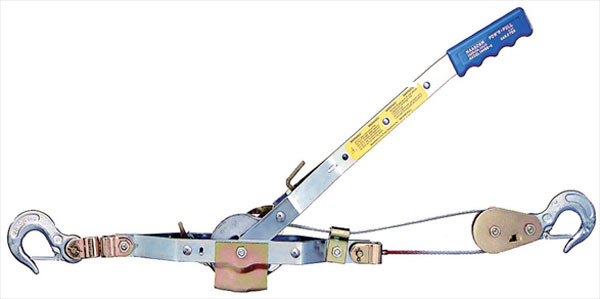24 Pounds In A 16 Pound Bag?
If you want to get “free” money, you need to define the standard for something. Sony and Phillips did it with the compact disc (and yes, Thompson and a bunch of other companies played supporting roles) and Dolby Laboratories did it with a number of their encoding technologies. You develop something that becomes a standard and technology companies are forced to license your technology to meet consumer’s needs and expectations. It doesn’t really matter if users make regular use of the technology or not. If the logo is on the front of the hardware and the algorithm is embedded in the silicon, then you…the manufacturer…pay the license fee for every unit you build. Free money…and it can amount to millions or even billions of dollars.
So what if you could come up with a clever method to squeeze more bits of dynamic range out of fewer bits? In the world of PCM encoded audio where bit length translates into dynamic range, this would be a very desirable thing. The guys at Pacific Microsonics did it years ago with their HDCD process. They managed to use the least significant bits in a 16-bit word of a CD to “encode” an additional 2-4 bits worth of dynamic range in properly encoded discs. I wrote about their method and the amazing results in a piece last year. You can check it out here.
Microsoft purchased Pacific Microsonics and their patent pool in 2000. This was just prior to the DVD-Audio specification and the era of longer word lengths in PCM audio. I recall meeting the HDCD guys at a trade show and asking why anyone would still be interested in their technology when the world was going to move past the CD’s 16-bit length in the next few years. The strategies of dithering to get additional dynamic range out of fewer PCM bits continues to this day. Enter POW-r from the POW-r consortium.
From their website:
“An innovative new technique for digital audio Word Length Reduction (WLR) is now available from the Pow-r Consortium, LLC. Some of the world’s top digital audio designers have come together as a team to create what is being hailed as the audio industry’s most transparent and dynamically stable method of reducing digital audio word lengths.
Pow-r, an acronym for Psychoacoustically Optimized Word length Reduction, is a unique, patent-applied-for algorithm, which reduces longer word lengths (20, 24, even up to 32 bits), to CD standard 16-bit format while retaining a high degree of perceived dynamic efficiency and very low noise. Pow-r is a scalable algorithm, meaning it is dynamically optimized and ready for all sample rates from 44.1kHz to 192 kHz, and beyond.”
WLR, there’s a new acronym for you. Word Length Reduction schemes have been around for a while. But the development team behind POW-r have tailored their as “narrow-band Nyquist Dither”. They claim that their method produces the most “sonically transparent digital word length reduction algorithms available.” And who doesn’t want a new method to shrink the sized of an audio file? Regardless of the new formats and expanding bandwidth, there’s always a need to get more data through the same sized pipeline.
But I’m not so sure that the world is ready to add yet another logo to the front of every playback device in your life. Does anyone remember Neural? The folks behind this effort are major players in the high-end audio world. They include:
David McGrath, Founder & Chief Scientist, Lake DSP Pty, Ltd., Australia
Daniel Weiss, President, Weiss Engineering Ltd., Switzerland
John La Grou, President, Millennia Media, Inc., USA
Dr. Glenn Zelniker, President, Z-Systems, Inc., USA
But audiophile consumers are pretty shy when in comes to WLR techniques. Heck, we don’t trust FLAC to accurately decompress a lossless audio file…how are we going to accept another strategy to do the same thing?
It will be interesting to see if this “lossy” method gains a foothold.


So this replaces noise shaping? I wonder if it could be combined with HDCD for better performance…
It is noise shaping.
I am not sure we need to get better dynamics by recording 16-bit+POW-r. What would be useful though, is to be able to extract better dynamics on highly compressed 16-bit CDs. As far as new recordings are concerned, less compression and recording 24-bit is not a technological challenge. Perhaps, I don’t get it!
Right. We have the technology…we just need the motivation to use it.
I am a member of the POW-r consortium (an LLC in the USA) and like to shed some light on what POW-r is all about. POW-r consists of three different word length reduction (WLR) algorithms. Two of them are noise shaping, one is nyquist dither. We conceived POW-r several years ago in order to give the professional studio a tool to reduce the word length of an audio file from e.g. a typical 24 or 32 bits to 16 bits to fit the CD format. There are many different WLR algorithms on the market but POW-r gives the engineer a known set of high quality algorithms to chose from. Many audio workstation manufacturers are POW-r licensees.
A word length reduction is not comparable with what HDCD tries to achieve. Decent WLR is a technical necessity to avoid quantization distortion which arises when truncating the word length from e.g. 24 bits to 16 bits. It is common practice in studios and by far nothing new or exotic.
I have written a white paper on digital level control and dithering (WLR) with sound examples. Very revealing.
See here: http://www.weiss-highend.ch/computerplayback/Digital_Level_Control.pdf
Thanks Daniel…I was unaware of your work in this area.